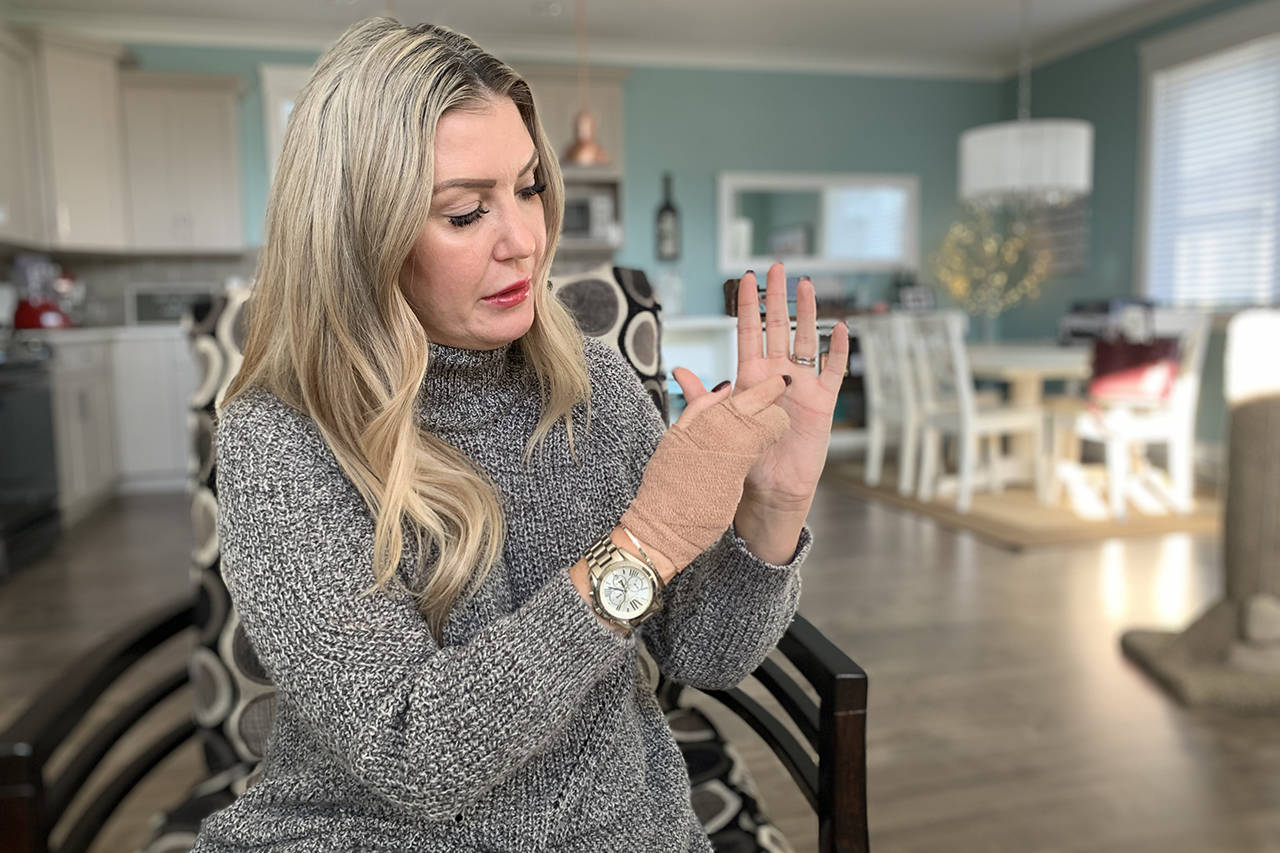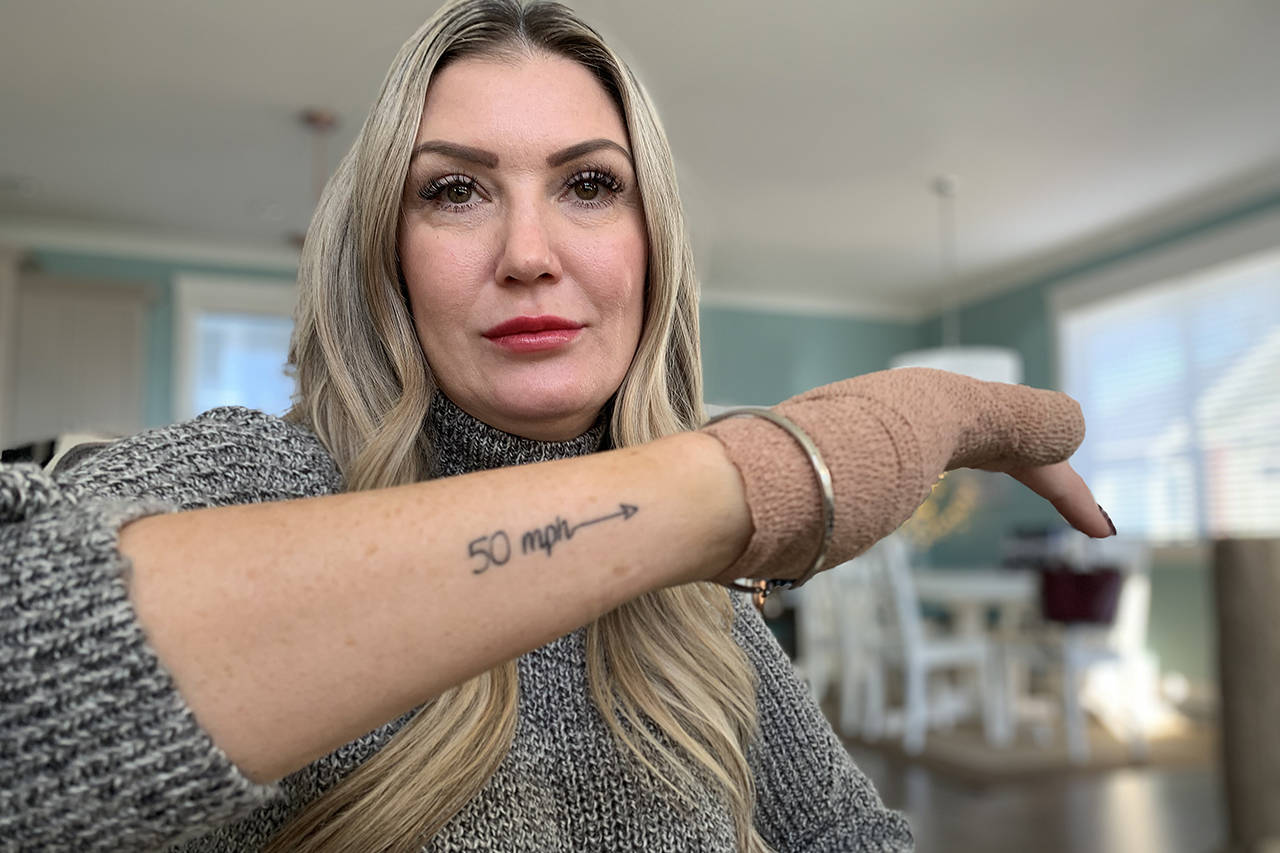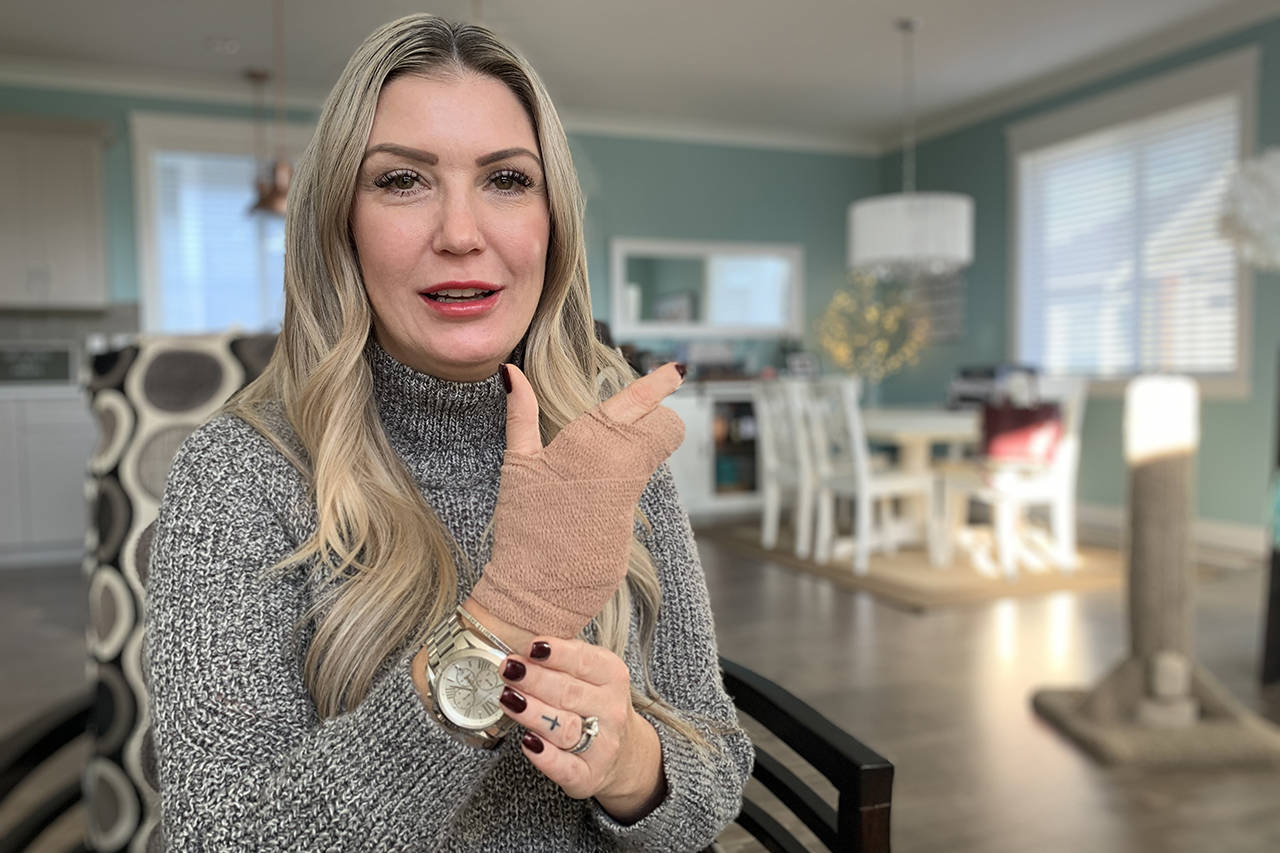When Julie Callaghan was hit by a train trying to save a man in a wheelchair stuck on the tracks nearly a year and a half ago, she was told by a doctor she could go back to work in three months.
But 16 months and 25 days after a CN Rail train travelling at 80 km/h hit her at the Broadway rail crossing in Chilliwack, she has now had a partial amputation done on her hand.
| Julie Callaghan's hand after treatment she received for being hit by a train on May 26, 2018 trying to save a man in a wheelchair on the tracks. (Submitted) |
Callaghan struggles every day with financial woes, frustration dealing with the medical system, and physical pain, all things that in some way serve as a distraction from the trauma of what she endured and what happened to the man she and another woman tried to save.
It was precisely 5:33 p.m. and 27 seconds on May 26, 2018 when Matthew Jarvis rolled southbound in a motorized wheelchair on to the CN tracks at Broadway. Fifty-nine seconds later, after stopping between the two sets of tracks looking west and then east, he changed directions and the rear wheels of his chair got stuck in the tracks.
Eight seconds later, the crossing arms began to descend, lights flashing, bells ringing.
Callaghan and another woman were stopped at the crossing, saw what was about to happen, and sprung into action. They got the two rear wheels out, but they couldn’t move the wheelchair as the train was less than 600 feet away bearing down on them.
At 5:34:04 the train struck Jarvis, killing him. Callaghan and the second motorist attempted to jump clear, but Callaghan was struck.
She was immediately called a hero by many.
“This woman was a true hero,” Mary-Jane Warkentin wrote on a Facebook post. She was driving up to the tracks and saw what happened. “She ran from her car to try to save the man and ended up injured due to her heroic action.”
That label of heroism was later made formal when the U.S.-based Carnegie Hero Fund Commission recognized her with a Carnegie Medal, something awarded to individuals who risk their lives saving or attempting to save others.
• READ MORE: Chilliwack woman who tried to save man stuck on rail tracks called a ‘hero’
• READ MORE: Heroism medal for Chilliwack woman who tried to save man in a wheelchair stuck on rail tracks
That was all great, but Callaghan is now left with the physical and mental aftermath, the bills, but also some guilt.
“I’m not going to say too much about it because it makes me so sad,” she said, welling up with emotion in her Fairfield Island home. “It doesn’t take much to trigger it, but how can I be sad about this when I’m here?
“People say ‘you are so strong.’ No, I’m just so incredibly grateful that I’m here to celebrate my daughter’s engagement. How can I be anything but strong and appreciative and grateful when it could have been so much worse.”
Despite that often positive outlook, the pain is substantial, often working to distract from her mental trauma. For more than a year after the incident, part of her hand was stuck in a painful claw position. Now, two weeks after the surgery that removed part of her hand, she suffers from phantom pain. All along she has also suffered with a rare condition known as Complex Regional Pain Syndrome (CRPS), a condition that is often associated with trauma and is considered a neurological condition, but is believed to be caused by damage to the peripheral nervous system.
A key symptom is severe pain that can be constant, a burning, pins-and-needles sensation. CRPS can also lead to, and does in Callaghan’s case, drastic changes in skin temperature and colour. The abnormal circulation can lead to vastly different feelings in her injured hand and her unaffected limb.
“When I have a flareup it can get really, really hot… and then goes corpse cold,” she said. “You don’t control your blood. My nervous system is messed up.”
And while the pain and the condition may be with her forever, given how expensive CRPS treatment is, what she is after is hand functionality in the form of a myoelectric prosthetic, something that costs between $80,000 and $100,000.
Her life has become consumed by medical appointments, surgeries, hospital visits and hand therapy, but she is really hoping she can fundraise money to pay for the prosthetic.
“This is what my life is like. It’s been absolutely all consuming.”
Callaghan is hoping to raise funds through a GoFundMe so she can get a sense of normalcy back in her life. She wanted to talk about her recent amputation, her sense of being now, and the road ahead, in part to spur on the GoFundMe but also to update those who have donated already.
“I feel an ethical and moral sense to show them where their money is going,” she said.
A couple of days before the surgery, she shared a video on YouTube to supporters announcing that the amputation was finally scheduled.
@PeeJayAitch
paul.henderson@theprogress.com
Like us on Facebook and follow us on Twitter.



